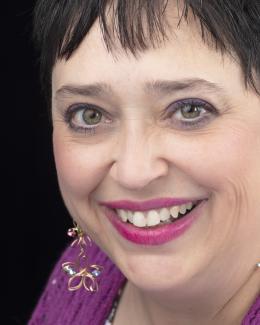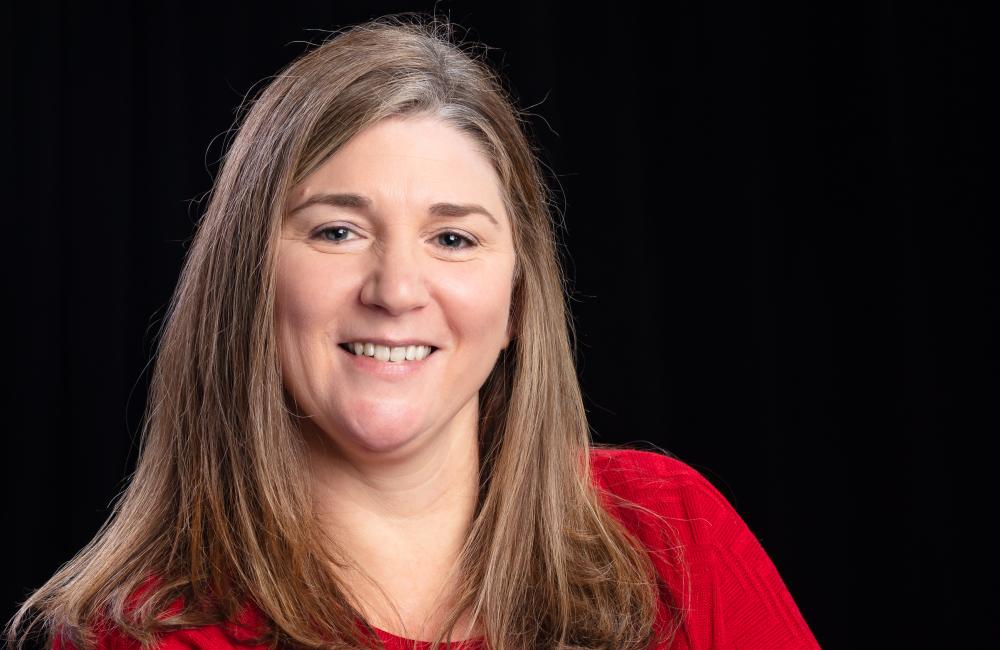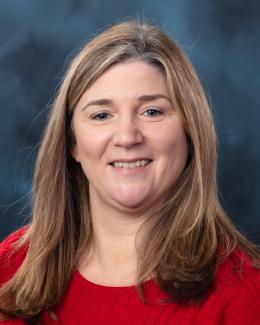Michele Baker joined NNFD at ORNL in 2021. Credit: Carlos Jones/ORNL, U.S. Dept. of Energy
Michele Baker considers her ability to plan one of her greatest strengths.
Yet she didn’t predict she’d move from ORNL’s Emergency Management Team, where she’d worked for about a dozen years, to her current position as section head for Safety, Engineering and Support in the Isotope Science and Engineering Directorate’s Nonreactor Nuclear Facilities Division.
“When (former NNFD Director) Mike Pierce approached me to let me know about this opportunity, I had never thought about being anywhere other than Emergency Management,” said Baker, who joined NNFD in October 2021. “EM was my expertise; that was what I had to offer, I thought. But Mike said, ‘We’ve seen the level of rigor that you have applied to EM, and we need that in NNFD.’ He saw that my skill set was broader than just EM.”
Baker joined EM in 2009, initially developing and reviewing technical planning basis documents, performing and coordinating program self-assessments, and maintaining procedures and plans. Two years later, she became EM’s manager, assuming responsibility for overall administration of the lab’s Emergency Management Program. Baker had come to ORNL after 10 years with a subcontractor, where she was an engineer and later a manager. Her duties included emergency management along with nuclear facility safety documentation, environment impact assessment and hazard analysis, among other specialized skills.
“A lot of what I enjoy is making sure that the entire program works,” Baker said. “In Emergency Management, you evaluate what possibly could happen so you can ensure you have plans and procedures in place. Then you’re prepared; you pull out the plans and follow the script to have the best outcome possible. You think about it ahead of time so that in the heat of the moment you’re not having to think and do — you’re just doing what’s already been thought out.”
Those skills — strategic planning, evaluating and improving processes, increasing efficiency and collaboration — carried over well to NNFD, she said.
Baker’s section is intent on finalizing a mission and a vision, as well as defining its role in NNFD’s and ISED’s operations. Notably, Baker wants everyone to understand how they contribute to that big picture.
“We’re branding ourselves in a way: ‘This is where you go for this skill set,’” Baker said. “My goal is for everyone to know, ‘I belong to this section, and this is where I fit in, and these are the things I do to support this mission and this vision.’
“If you don’t know why you’re doing what you’re doing, what’s the motivation to keep doing it? We have a lot of people here who really love what they do, and we need to give them the ability to see how what they do makes a difference, so that they want to keep doing it with us.”
Baker sees her section as still early in developing that big picture, but she’s excited to see some of the planning come to fruition. And she’s even more excited to reach some benchmarks and keep perfecting the specialized role her section has in ensuring safe operations at ISED’s nuclear facilities at ORNL and elsewhere.
“We’ve got a lot of work ahead of us, but it’s rewarding work,” she said.
UT-Battelle manages ORNL for the Department of Energy’s Office of Science, the single largest supporter of basic research in the physical sciences in the United States. The Office of Science is working to address some of the most pressing challenges of our time. For more information, please visit energy.gov/science.




